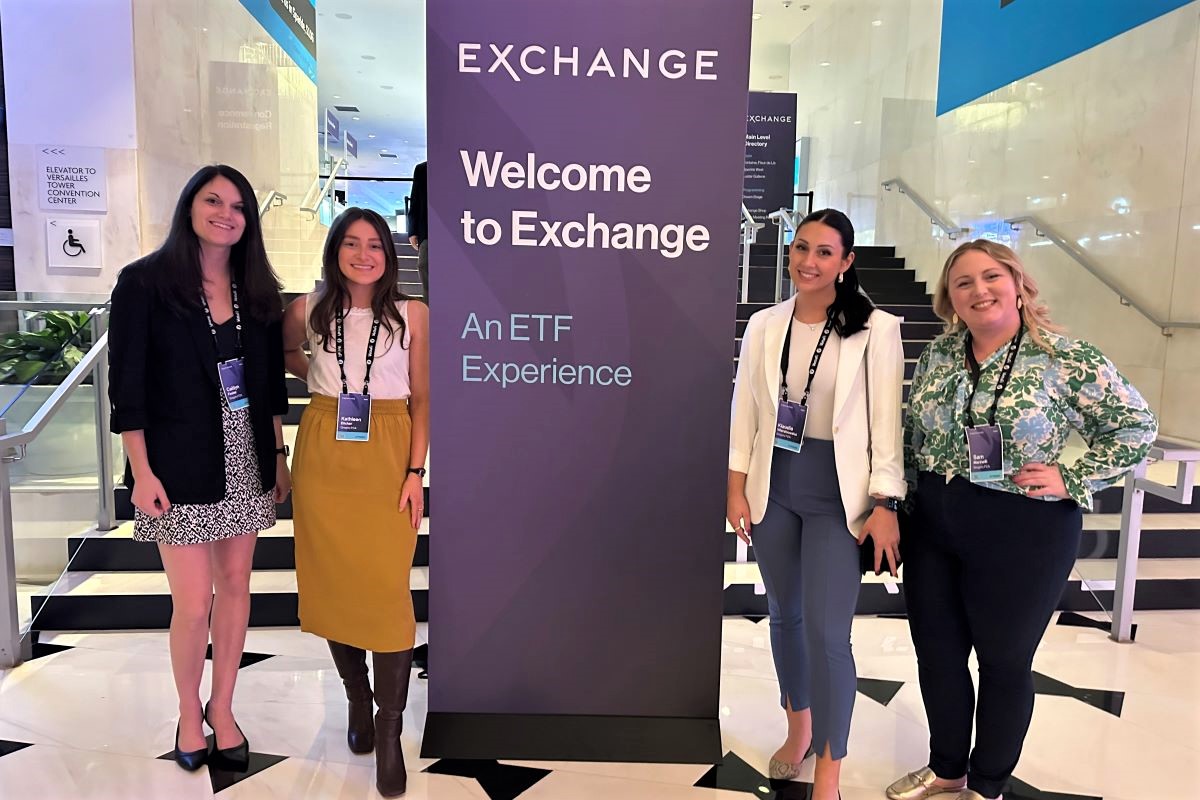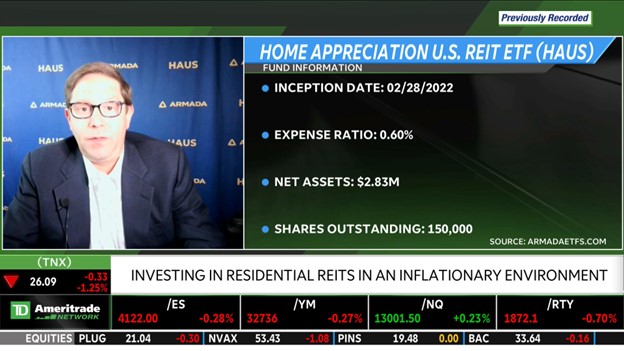The timing of 2023 Exchange: An ETF Experience last month could not have been more appropriate as the industry just celebrated the 30-year anniversary of the first ETF (SPDR S&P 500 ETF Trust) on Jan. 22. The three-day Exchange event in Miami Beach brought together ETF issuers, industry pundits, journalists, financial advisers and more to honor the pioneers who helped shape the industry, reflect on the extraordinary growth of the fund structure and discuss what’s next for ETFs.
From a content and education standpoint, the conference did not disappoint. Through a series of panel sessions and keynotes, speakers covered the topics most top of mind for financial advisers and the broader ETF community, from geopolitical issues and inflation to active vs. passive and other trends in portfolio management.
Gregory FCA was on the ground at the Fontainebleau hotel, arranging media opportunities for clients, reconnecting with ETF industry peers and tuning into the sessions. As we reflect back on Exchange, here are our key takeaways and tips for fund and index marketers:
Growth of direct indexing
The growing adoption of direct indexing as a personalization tool dominated panel discussions throughout Exchange. With direct indexing, investors can receive more customized portfolios tailored to their specific objectives and financial situations — all while taking advantage of tax efficiency. During the “Future of Index Innovation” panel, Craig Lazzara, managing director at S&P Dow Jones Indices, offered insight into how index providers are leaning into this trend by making it operationally easier for investors to access direct indexing.
To help advisers and clients better understand this strategy, it’s important to demonstrate use cases through targeted media campaigns in adviser-facing publications. As an example, Adam Grealish, head of investments at Gregory FCA client Altruist, authored a timely byline in Kiplinger last year sharing his perspective on how direct indexing can be used in client portfolios to better align with an investor’s values or offset capital gains.
TINA no more?
Discussions around the volatility of 2022, plummeting stocks and bonds, and the Fed’s efforts to tame inflation were a common thread woven throughout Exchange. One panel, in particular, discussed how last year’s volatility led to the beatdown of the traditional 60/40 portfolio. The question posed — “Is TINA (“There Is No Alternative”) no more?”
This group took the stage to kick off the second day of the event, highlighting what the macro environment indicates for 2023 and joking the panel should’ve really been called “Goldilocks and the Three Bears.” However, the overarching consensus is that 2023 is on pace to be a better year for the 60/40 portfolio. The start of this year has seen a reversal trade with stock and bond prices both rising, putting us back on the path toward “normalcy” — albeit not a fully smooth ride for investors.
How should issuers market their products amid this shifting asset allocation framework? The reality is that not every fund will outperform in every market environment. Transparency is critical when communicating the value proposition of your fund, whether it’s considered out of favor, an alternative to the norm or poised to outperform. When the macro environment shifts in your favor, be ready to leverage a targeted media relations campaign to put your fund in the spotlight.
Geopolitical volatility
Amid the “Balloon-gate” controversy following the shooting down of a Chinese spy balloon by U.S. forces off the coast of South Carolina on Feb. 4, Exchange featured several conversations around the implications of geopolitics on investor portfolios. Renowned political scientist Ian Bremmer delivered Monday morning’s keynote address on the state of geopolitics, followed by a Q&A with Bloomberg journalist Katie Greifeld.
Bremmer discussed the improbability of deglobalization despite the potential of some “uncoupling” — for example, between Russia and the West. He shared bullish sentiment on some emerging markets like China in the near term, but added there’s no way to be positive about emerging markets across the board in today’s environment. Finally, Bremmer noted that he’s most optimistic about the developed world being viewed as a destination in the flight to quality, with the U.S., in particular, looking asymmetrically stronger.
Geopolitics poses both risk and potential reward for fund managers looking to help investors navigate rocky markets. Uncertain times call for managers to step up and address concerns while also highlighting areas of opportunity for investors. It’s critical to explore the best ways to maintain regular communication with investors, which might include a blog post shared via email or a short-form video posted on social media.
Mutual fund to ETF conversions
Since March 2021, 33 mutual funds with almost $60 billion in assets have been converted into ETFs. This is a trend many ETF industry leaders expect to continue in 2023 and beyond.
During the “Active Strategies: The Pendulum Has Swung” panel, Holly Framsted, CFA, head of ETFs at Capital Group; and Tim Coyne, head of ETFs at T. Rowe Price, both recognized the massive opportunities for traditional mutual fund managers looking to enter the ETF space.
However, managers need to be thoughtful because not every strategy will translate successfully to an ETF. Nor does this conversion trend mean we will witness a cannibalism of mutual funds — different vehicles serve different needs for advisers and should not be seen as clones.
When considering a conversion, it is essential to highlight the advantages of each vehicle in regard to specific strategies, so investors can make informed decisions about their investments. In particular, focus on the tax benefits associated with choosing an ETF wrapper versus a mutual fund option. Leading up to a conversion, creating a series of content focused on the benefits is critical to ensuring that investors feel comfortable with the decision.
Client AllianzIM applied a similar content strategy following the launch of the firm’s suite of buffered ETFs in June 2020. Recognizing that risk management is not a one-size-fits-all solution, the team crafted a byline for ThinkAdvisor highlighting the benefits of various risk management strategies, providing the information advisers and their clients need to make informed decisions about asset allocation.
The biggest trends in ETFs? That’s up for debate
Opinions at the conference varied on what’s going to be the next big trend in ETFs. Greifeld and VettaFi’s Tom Lydon discussed how the neverending hunt for yield will drive record interest in dividends and income-producing strategies, while Cinthia Murphy of ETF Think Tank noted she’s seeing a focus on active funds as well as derivatives strategies.
However, one thing is very clear: ETF innovation is alive and well.
What do you think will be the dominant trends this year, and how can you capitalize on them in your content marketing or PR strategy? Please contact us to learn how Gregory FCA can help.

